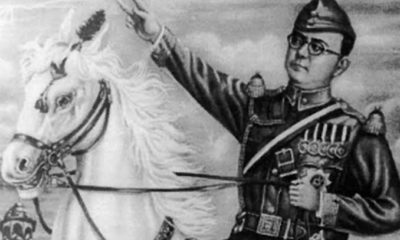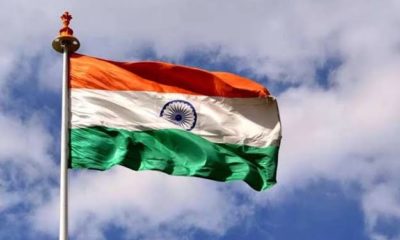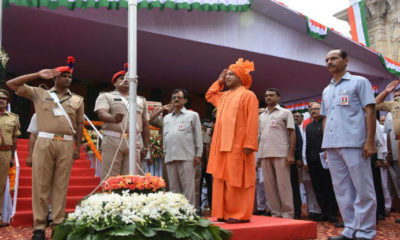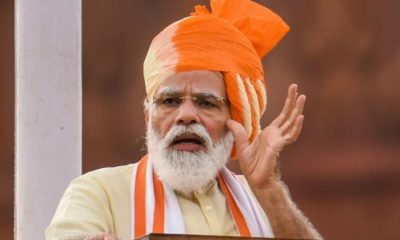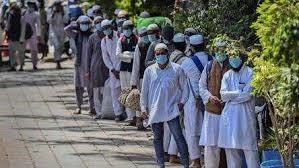Feature
Independence Day spcl: Partition through eyes of 12-year-old girl

New Delhi: What could have Partition meant to a 12-year-old girl who had a Hindu father and a Muslim mother? Her letters to her mother in her diary journal give a poignant insight to what went through her mind during the troubled times this is special story on Independence Day.
On the eve of her 12th birthday, Nisha receives a journal to record the thoughts she can never seem to say aloud as she starts to see the world through older eyes.

But it’s not just Nisha who is changing. She doesn’t even recognise her country anymore.
It’s 1947, and India, newly freed from British rule, was divided. Many people are killed crossing borders as tensions among Hindus, Muslims, Sikhs, and others flare. Nisha doesn’t know which side she’s supposed to be on or why she has to choose. After losing her mother, who dies giving birth, she can’t imagine losing her homeland, too.

Her mother was Muslim, but now she’s gone. Her father is Hindu, and says it’s no longer safe for them to stay in Pakistan. And so Nisha and her family become refuges and embark on a dangerous journey by train and by foot to reach their new home on the other side of the border.
Told through the letters Nisha writes to her mother in her journal, “The Night Diary”, published by Penguin, is the story of one of the most dramatic moments in history and of one girl’s search for home, her own identity, and a hopeful future.
Independence Day spcl: Story of girl born from Hindu father and Muslim mother:
In her letter of August 15, 1947, Nisha writes, “So as of today, the ground I’m standing on is not India anymore We’re aupposed to leave and find a new home.”
According to author Veera Hiranandani, “The fictional family depicted in this novel and their experiences are loosely based on my father’s side of the family.”

Hiranandani’s father, with his parents and siblings, had to travel across the border from Mirpur Khas to Jodhpur just like the main character, Nisha, does in the book.
“My father’s family made the journey safely, but lost their home, many belongings, and had to start over in an unfamiliar place as refugees. I wanted to understand more about what my relatives went through which is a big reason why I wrote this book,” she says.

Nisha and her family embark first by train but later on foot to reach her new home. The journey is long, difficult, and dangerous. But even if her country has been ripped apart, Nisha still believes in the possibility of putting herself back together.
Hiranandani, who teaches creative writing at New York’s Sarah Lawrence College’s Writing Institute, says “Nisha and her family’s journey was harder than some, including my father’s, and easier than others. This story is a combination of known history and imagined scenarios to create one possible story that could have taken place at this time.
Entertainment
Meghalaya Reserves Legalized Gambling and Sports Betting for Tourists

The State Scores Extra High on Gaming-Friendly Industry Index
Meghalaya scored 92.85 out of 100 possible points in a Gaming Industry Index and proved to be India’s most gaming-friendly state following its recent profound legislation changes over the field allowing land-based and online gaming, including games of chance, under a licensing regime.
The index by the UK India Business Council (UKIBC) uses a scale of 0 to 100 to measure the level of legalisation on gambling and betting achieved by a state based on the scores over a set of seven different games – lottery, horse racing, betting on sports, poker, rummy, casino and fantasy sports
Starting from February last year, Meghalaya became the third state in India’s northeast to legalise gambling and betting after Sikkim and Nagaland. After consultations with the UKIBC, the state proceeded with the adoption of the Meghalaya Regulation of Gaming Act, 2021 and the nullification of the Meghalaya Prevention of Gambling Act, 1970. Subsequently in December, the Meghalaya Regulation of Gaming Rules, 2021 were notified and came into force.
All for the Tourists
The move to legalise and license various forms of offline and online betting and gambling in Meghalaya is aimed at boosting tourism and creating jobs, and altogether raising taxation revenues for the northeastern state. At the same time, the opportunities to bet and gamble legally will be reserved only for tourists and visitors.
“We came out with a Gaming Act and subsequently framed the Regulation of Gaming Rules, 2021. The government will accordingly issue licenses to operate games of skill and chance, both online and offline,” said James P. K. Sangma, Meghalaya State Law and Taxation Minister speaking in the capital city of Shillong. “But the legalized gambling and gaming will only be for tourists and not residents of Meghalaya,” he continued.
To be allowed to play, tourists and people visiting the state for work or business purposes will have to prove their non-resident status by presenting appropriate documents, in a process similar to a bank KYC (Know Your Customer) procedure.
Meghalaya Reaches Out to a Vast Market
With 140 millions of people in India estimated to bet regularly on sports, and a total of 370 million desi bettors around prominent sporting events, as per data from one of the latest reports by Esse N Videri, Meghalaya is set to reach out and take a piece of a vast market.
Estimates on the financial value of India’s sports betting market, combined across all types of offline channels and online sports and cricket predictions and betting platforms, speak about amounts between $130 and $150 billion (roughly between ₹9.7 and ₹11.5 lakh crore).
Andhra Pradesh, Telangana and Delhi are shown to deliver the highest number of bettors and Meghalaya can count on substantial tourists flow from their betting circles. The sports betting communities of Karnataka, Maharashtra, Uttar Pradesh and Haryana are also not to be underestimated.
Among the sports, cricket is most popular, registering 68 percent of the total bet count analyzed by Esse N Videri. Football takes second position with 11 percent of the bets, followed by betting on FIFA at 7 percent and on eCricket at 5 percent. The last position in the Top 5 of popular sports for betting in India is taken by tennis with 3 percent of the bet count.
Local Citizens will Still have Their Teer Betting
Meghalaya residents will still be permitted to participate in teer betting over arrow-shooting results. Teer is a traditional method of gambling, somewhat similar to a lottery draw, and held under the rules of the Meghalaya Regulation of the Game of Arrow Shooting and the Sale of Teer Tickets Act, 2018.
Teer includes bettors wagering on the number of arrows that reach the target which is placed about 50 meters away from a team of 20 archers positioned in a semicircle.
The archers shoot volleys of arrows at the target for ten minutes, and players place their bets choosing a number between 0 and 99 trying to guess the last two digits of the number of arrows that successfully pierce the target.
If, for example, the number of hits is 256, anyone who has bet on 56 wins an amount eight times bigger than their wager.


